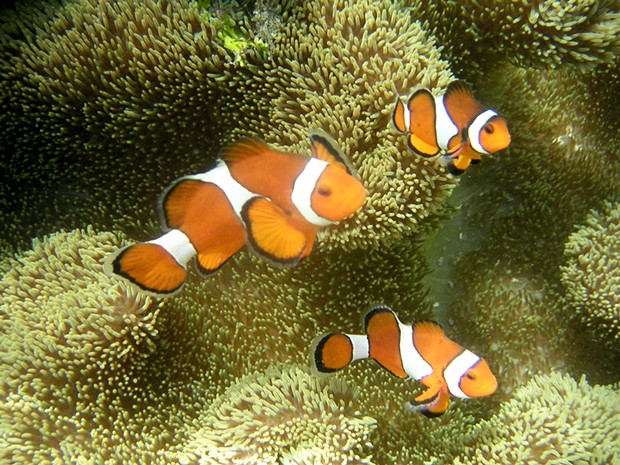
Metatron, GNI Free Documentation License
Sequential hermaphroditism: All clownfish start out as male but the largest fish in a group become female.
[
{
"name": "Top Stories Video Pair",
"insertPoint": "7",
"component": "17087298",
"parentWrapperClass": "fdn-ads-inline-content-block",
"requiredCountToDisplay": "1"
}
]
"The biological definition of sex wasn't designed to ensure fair sporting competition, or to settle disputes about access to healthcare."
— Paul Griffiths, professor of Philosophy of Biology, University of Sydney
With the current debate about gender identity, particularly with regard to the rights and welfare of transgender people, this seems an appropriate time to ask, "Why two biological sexes anyway?" I say "biological" because, these days, "sex" on its own can mean so many things, creating confusion and conflict: Do we mean chromosomal (XX vs. XY) sex? Phenotypic (physical characteristics) sex? Gender (one's identity) sex?
None of these meanings are much use to biologists, whose compass is way beyond a limited human-centered view. "Biological sex" is much less ambiguous in the wider world than any of these, referring instead to how organisms package their DNA into "gametes," the sex cells that merge to make a new organism. Males produce small gametes, females large gametes.
This biological definition of sex avoids defining individuals as being born male or female, whether human or otherwise, and instead refers to the two distinct strategies that organisms use to propagate. Humans, with fairly rare exceptions, are born with the potential to make either large gametes — eggs — or small gametes — sperm. (A gamete is a reproductive cell containing half the genetic material necessary to form a complete organism.) The term biologists use for species having unequal gametes like ours is anisogamic. Most anisogamic species, whether animals or plants, have separate sexes, while a few are hermaphrodites, combining their two types of gametes in the same individual. My favorite example is the earthworm, which produces eggs at one end and sperm at the other.
But why? Why didn't nature just stick with one sex, with organisms simply cloning themselves, rather than going to all this trouble? Well, nature did, for billions of years, until about 1,200 million years ago, when single-celled eukaryotes — organisms whose cells have a membrane-bound nucleus — somehow stumbled on sexual reproduction. The payoff is that the offspring of a species that combines the DNA of two individuals have much greater variety — and therefore opportunities to adapt to a changing environment — than do self-cloning organisms. (Despite this, most of Earth's species, particularly those classified as Bacteria and Archaea, are still self-cloners.)
So if two are better than one, why not more than two, like on Kurt Vonnegut's planet Tralfamadore in Slaughterhouse-Five, where five sexes are involved in the production of a new individual? Presumably, because getting two individuals together is a lot easier than organizing a ménage à cinq. What seems to have happened on our planet is that nature evolved a twin strategy for its gametes. One type, the mobile sperm (readily produced in vast numbers) is optimized to find and combine with a rarer immobile gamete, the egg, which is larger and incorporates the resources for the new individual to survive and thrive. Maybe nature experimented with a compromise, i.e. pairs of individuals combining similar gametes, but this strategy apparently didn't pay off.
Meanwhile, we humans develop our sexuality and identity in ways in that, for many individuals, isn't binary male-female. While the biological dichotomy remains — either a few large immobile gametes or millions of small mobile ones — turns out, we're much more complicated. To paraphrase that legendary French lawmaker: Vive les différences!
Barry Evans (he/him, [email protected]) remembers a time when life seemed to be simpler.
more from the author
-
Doubting Shakespeare, Part 1: Stratfordians vs. anti-Stratfordians
- Apr 25, 2024
-
A Brief History of Dildos
- Apr 11, 2024
-
Eclipse!
- Mar 28, 2024
- More »
Latest in Field Notes
Readers also liked…
-
Trouble on the Line: The Reality Part 2
- Nov 3, 2022
































